A quality helmet is the most important piece of gear you can wear during any type of cycling, and this is especially true when mountain biking. While we all try to avoid them, crashes happen, and a good helmet can help prevent injuries to your head and brain.
We rounded up a diverse selection of the best mountain bike helmets available in 2023 and put them through their paces on a wide range of trail types, riding styles, and weather conditions. From desert XC loops, loamy forest laps, shuttle runs, and gravel rides, we spent ample time riding in each model while assessing key elements of their performance.
While testing, we scrutinized important characteristics that matter on the trail like fit, comfort, coverage, visors, ventilation, and durability. We took detailed notes and narrowed down the field to our favorite models and those that excel for specific reasons compared to the rest. Though no single helmet will be perfect for every type of riding or rider, we’re confident you’ll find something to suit your needs and budget.
We’ve listed our top recommendations below, and to compare the models we tested at a glance, check out our comparison chart. If you need help deciding what you need, be sure to check out our buying advice and FAQ for answers.
The Best Mountain Bike Helmets of 2023
Best Budget Mountain Bike Helmet
-
MSRP
$75 -
Weight
400g (Large) -
Rotational Impact Protection System
MIPS -
Adjustable Visor
No -
Number of Vents
13 -
Available Sizes
XS, S, M, L, XL -
Virginia Tech Helmet Safety Rating
5-star

-
Very reasonably priced -
High-end look and feel -
Comes in 5 shell sizes -
Surprisingly comfortable -
5-star Virginia Tech safety rating
-
Non-adjustable visor isn’t great at blocking the sun -
Basic strap design -
Moderate ventilation
Runner-Up
-
MSRP
$250 -
Weight
401g (M-L) -
Rotational Impact Protection System
MIPS Integra -
Adjustable Visor
Yes -
Number of Vents
17 -
Available Sizes
XS-S, M-L, XL-XXL -
Virginia Tech Helmet Safety Rating
Not tested
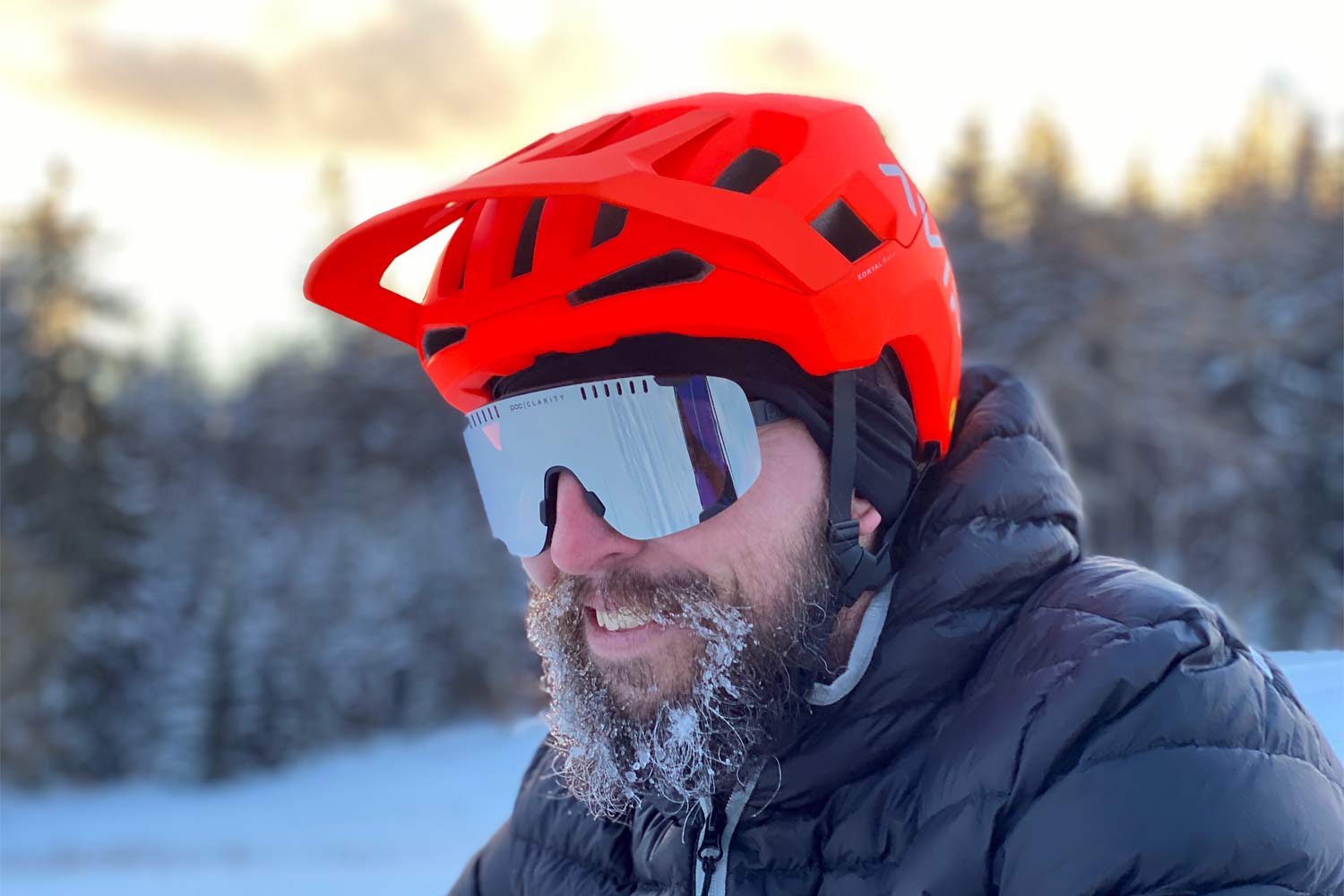
-
Generous coverage -
Lots of safety features -
Great Ventilation -
Meets Dutch NTA 8776 e-bike standard -
Comes in multiple colors
-
Extended coverage at temples can conflict with some sunglass arms -
Sizing runs a little big
Most Comfortable Mountain Bike Helmet
-
MSRP
$250 -
Weight
412g (MD/LG) -
Rotational Impact Protection System
MIPS (B-Series) -
Adjustable Visor
Yes -
Number of Vents
16 -
Available Sizes
XS/SM, MD/LG, XL/2XL -
Virginia Tech Helmet Safety Rating
5-star

-
Super comfortable -
Extended coverage -
Sweat management system -
Adjustable visor -
5-star Virginia Tech rating
-
Slightly heavier than some helmets -
Expensive
Best Ventilated Mountain Bike Helmet
-
MSRP
$180 -
Weight
375g (Large) -
Rotational Impact Protection System
MIPS SL -
Adjustable Visor
No -
Number of Vents
15 -
Available Sizes
S, M, L -
Virginia Tech Helmet Safety Rating
5-star

-
Excellent coverage, especially at the back of the head -
Outstanding ventilation -
Effective eyewear integration -
Less expensive than many other top of the line helmets -
Competitively lightweight
-
Non-adjustable visor – doesn’t block sun effectively -
Styling may not be for everyone
Best XC Mountain Bike Helmet
-
MSRP
$300 -
Weight
270g (Medium) -
Rotational Impact Protection System
MIPS Spherical -
Adjustable Visor
N/A -
Number of Vents
24 -
Available Sizes
S, M, L -
Virginia Tech Helmet Safety Rating
5-star
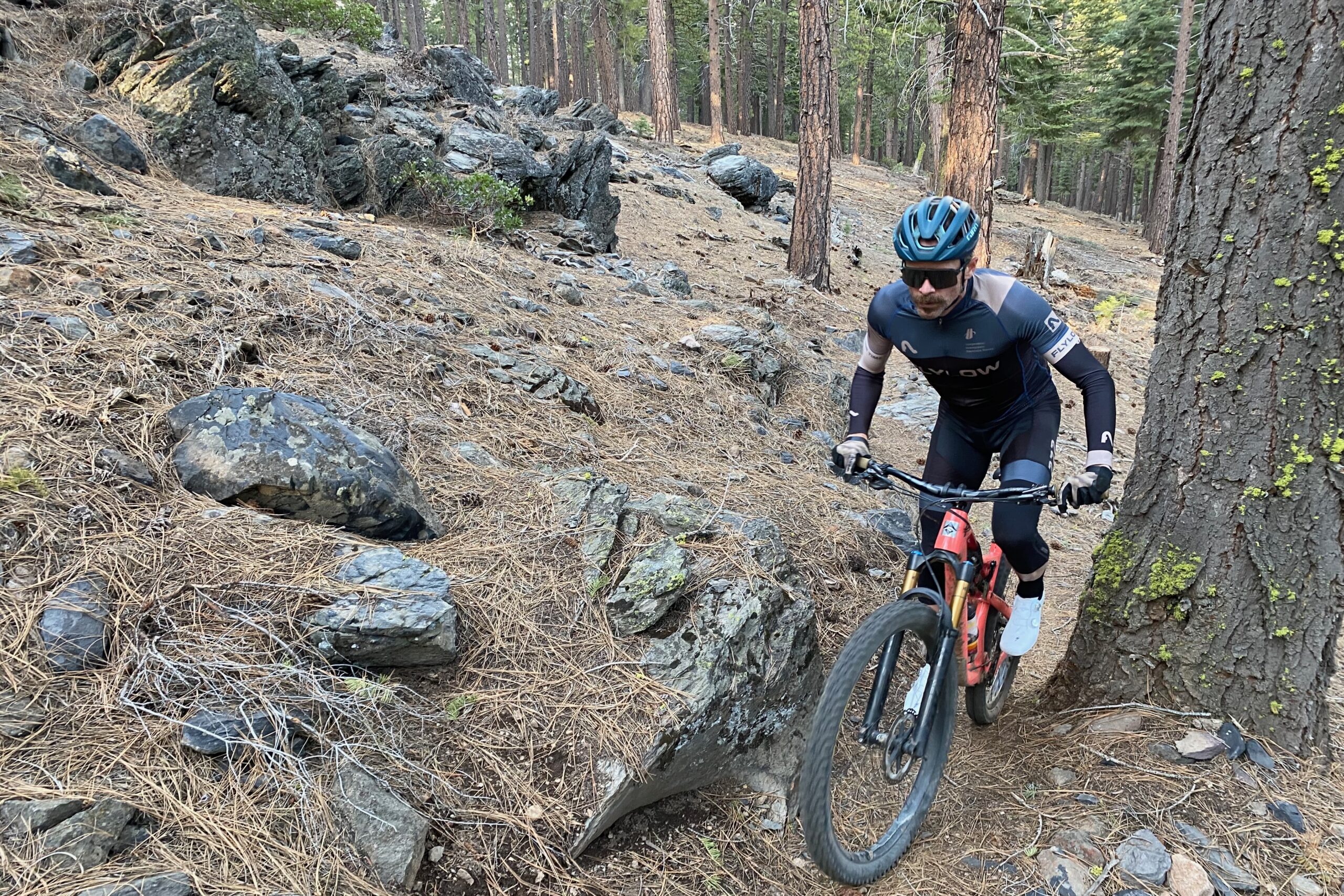
-
Super lightweight -
Excellent ventilation -
Highest ranked model in Virginia Tech’s impact testing -
Comfortable
-
Expensive -
Less coverage than dedicated trail riding helmets
Runner-Up XC Helmet
-
MSRP
$200 -
Weight
278g (Medium) -
Rotational Impact Protection System
MIPS -
Adjustable Visor
N/A -
Number of Vents
21 -
Available Sizes
S, M, L -
Virginia Tech Helmet Safety Rating
Not tested (previous version with SPIN: 5-star)

-
Very lightweight -
Excellent Ventilation -
Secure eyewear storage -
Moderate price point
-
Less coverage than trail-oriented helmets -
Sizing runs a little small
Best of the Rest
-
MSRP
$200 -
Weight
423g (L) -
Rotational Impact Protection System
MIPS -
Adjustable Visor
Yes -
Number of Vents
14 -
Available Sizes
S, M, L -
Virginia Tech Helmet Safety Rating
Not Tested

-
Lots of Coverage -
Good Ventilation -
Highly adjustable harness system -
Quality Construction -
ActiCage reinforced EPS
-
Light pressure points at top/back of head -
Hard to stash sunglasses in front vents
-
MSRP
$235 -
Weight
478g (L) -
Rotational Impact Protection System
MIPS Spherical -
Adjustable Visor
Yes -
Number of Vents
21 -
Available Sizes
S, M, L -
Virginia Tech Helmet Safety Rating
Not Tested

-
Robust, protective feel -
Good coverage -
Comfortable fit -
Sweat Guide Pad actually works to manage sweat -
Comes with camera/light mount -
Can add chin bar to make it a convertible
-
Comparatively heavier weight -
Not the best ventilation
-
MSRP
$160 -
Weight
420g (L) -
Rotational Impact Protection System
WaveCel -
Adjustable Visor
Yes -
Number of Vents
13 -
Available Sizes
S, M, L, XL -
Virginia Tech Helmet Safety Rating
5-star
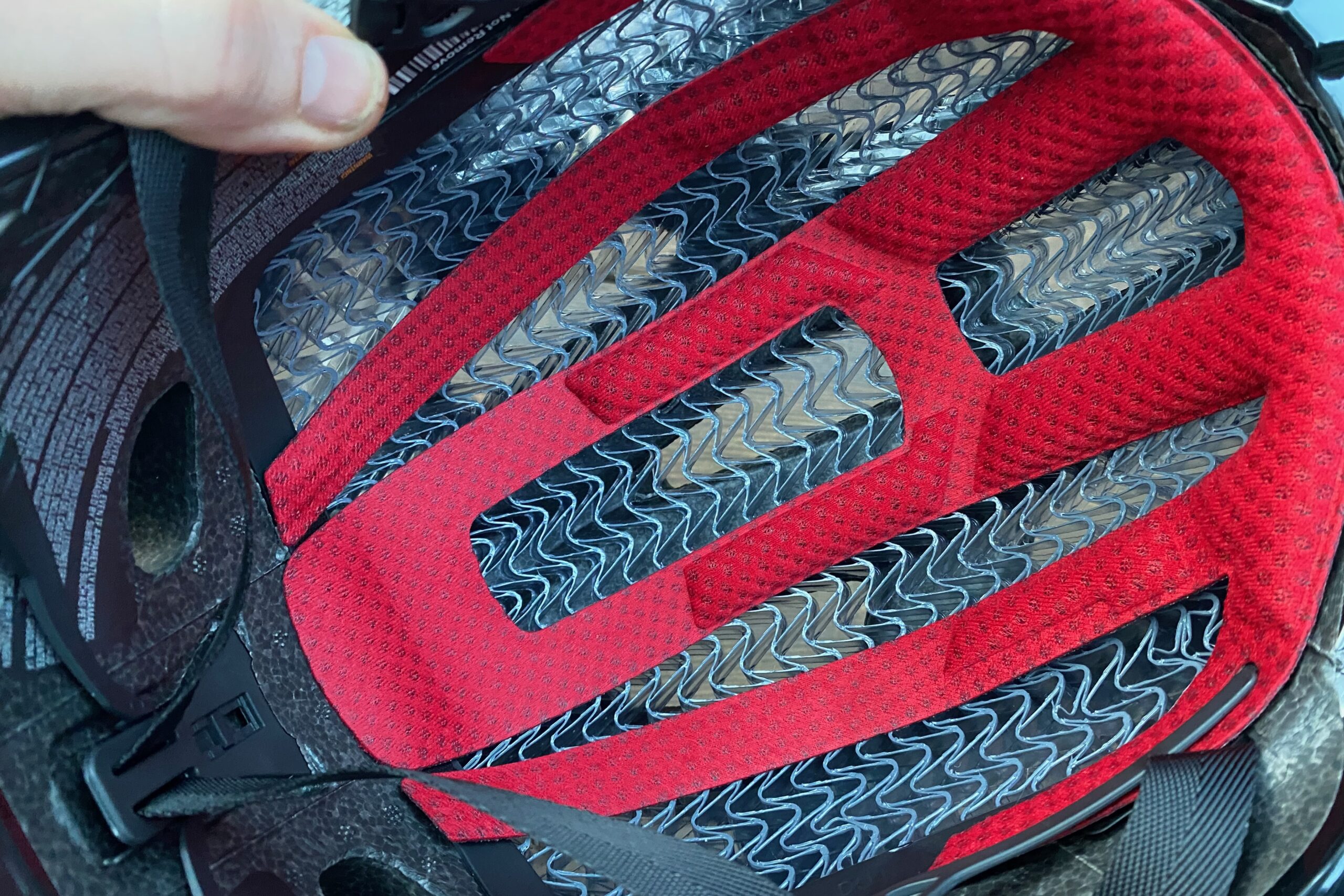
-
Moderate price point -
Comfortable fit -
Boa adjustment system -
Scores better in Virginia Tech testing than the more expensive Bontrager Blaze
-
Straps could be improved -
WaveCel adds bulk -
Doesn’t have the best ventilation
-
MSRP
$250 -
Weight
414g (L) -
Rotational Impact Protection System
MIPS -
Adjustable Visor
Yes -
Number of Vents
20 -
Available Sizes
S, M, L -
Virginia Tech Helmet Safety Rating
Not tested

-
Unique styling -
Better ventilation than original Forefront -
MIPS and Koroyd -
Adjustable visor -
Sunglass storage
-
Still not the best ventilation -
MIPS liner can be a little noisy -
Fairly expensive
-
MSRP
$125 -
Weight
383g (L-XL) -
Rotational Impact Protection System
SmartShock -
Adjustable Visor
Yes -
Number of Vents
14 -
Available Sizes
XS/S, S/M, L/XL -
Virginia Tech Helmet Safety Rating
3-star

-
Reasonable Price -
Looks good -
Decent Ventilation -
Adjustable Visor -
Comes with extra set of pads
-
SmartShock Elastomer caused minor pressure point in forehead -
3-star Virginia Tech rating -
Slightly less coverage than similar helmets
-
MSRP
$200 -
Weight
420g (L) -
Rotational Impact Protection System
MIPS -
Adjustable Visor
Yes -
Number of Vents
17 -
Available Sizes
S, M, L -
Virginia Tech Helmet Safety Rating
5-star

-
Comfortable fit -
Comes with 2 visors (one with integrated GoPro mount) -
Good ventilation -
Comfortable -
Offered in numerous colors
-
High visor placement doesn’t block sun as well as it could -
Slightly less coverage than some other models
-
MSRP
$220 -
Weight
345g (L) -
Rotational Impact Protection System
KinetiCore -
Adjustable Visor
Yes -
Number of Vents
19 -
Available Sizes
S, M, L -
Virginia Tech Helmet Safety Rating
5-star

-
Lightweight -
Well-ventilated -
Good coverage -
Comes with camera mount -
Works with removable rear light (sold separately)
-
Experienced some pressure points on the head
-
MSRP
$120 -
Weight
405g (L) -
Rotational Impact Protection System
MIPS Evolve Core -
Adjustable Visor
Yes -
Number of Vents
21 -
Available Sizes
S, M, L, XL -
Virginia Tech Helmet Safety Rating
Not tested

-
Reasonable price -
Reasonable weight -
Good ventilation -
Sunglass storage
-
Strap splitter could be better -
Sunglass storage doesn’t work with all sunglasses
Comparison Chart

Why Should You Trust Bikerumor?
At Bikerumor, we take cycling very seriously, and no matter what type of riding we’re doing, our safety is of the utmost importance. For that reason, a quality helmet is the most important piece of gear we put on before every mountain bike ride. We’re always seeking the most protective, comfortable, and best-looking mountain bike helmets we can find so we can have fun on the trails with the peace of mind a good helmet provides.
Our editorial staff has been testing the latest and greatest mountain bike helmets for over a decade. Sure, we’ve all got our favorites, but the market is ever-changing with new and updated models coming out all the time. Fortunately, we get to try them all out, often before they are even available to the public. This experience has given us unique insight as to what makes a great helmet, along with the ability to discern the differences in performance and functionality between the different models we test.
Review author, Jeremy Benson, has been professionally testing and reviewing mountain bikes and accessories for 6+ years. In that time, he has tried over 30 different helmets. Whether for XC rides, shuttle laps, or adventurous backcountry loops, he has honed in on the specific performance attributes that make a great helmet. For the purposes of this review, he tested 10 models side by side to directly compare things like fit, comfort, ventilation, coverage, and visors. Those findings, combined with models our editors have recently tested, are presented here to help inform your important mountain bike helmet purchase decision.

Mountain Bike Helmet Buyer’s Guide
There’s a lot to consider when choosing a new mountain bike helmet. Here we break down some important factors that may help with finding the right model to suit your needs.
Different Types of Mountain Bike Helmets
As there are several styles of mountain biking, there are just as many helmets to meet the needs of different riders. As the sport has evolved, so too has the protective equipment we use, and these days, helmets are safer than ever. In general, mountain bike helmets fall into three different categories and we explain the differences below.

Trail, All-Mountain, and Enduro Half-Shells
Half-shells for trail, all-mountain, and enduro riding are the most common type of helmet we see out on the trails. These “open-face” models cover the top of the head with modern shell designs offering extended coverage on the back and side of the head to better protect the occipital and temporal lobes. These helmets almost always have a visor (peak), and many are designed to work with both sunglasses and goggles. The added materials involved with extended coverage, visors, and other features typically result in helmets that are slightly heavier than their XC-oriented counterparts.

XC Helmets
Cross-country riders and racers often prioritize lightweight and aerodynamics, so XC helmets are somewhat different than their trail-oriented counterparts. In fact, most professional XC racers are using what are technically considered road bike helmets. This style of helmet is typically sleek, low-profile, and well-ventilated, and they provide a bit less coverage of the head than the extended coverage models. They also generally do not come with a visor, although some riders will wear a cycling cap underneath to act as a visor in certain conditions.

Full Face and Convertible Helmets
Full face helmets provide the most head protection with shells that extend over the ears and large chin bars that provide protection for the front of the face. Convertible helmets are those that have a removable chin bar, allowing the user to choose when they want half-shell or full-face coverage. This style of helmet has traditionally been worn by those in gravity-oriented disciplines like downhill and enduro racing, although a new breed of lightweight and well-ventilated models has expanded their appeal to a broader range of users. Full face models now come in a range of designs, styles, materials, and weights, with models geared toward virtually every type of rider or protective needs.
Getting the Right Fit
A properly fitting helmet is critical for it to not only be comfortable but to work properly in the event of a crash. If it is too loose or too tight, its protective qualities may be compromised or its protective features may not function properly. Additionally, a properly fitting helmet is more comfortable, allowing you to focus your attention on the trail ahead. It is important to note that fit and comfort are subjective, and not every individual’s head shape will work with every helmet. If your head is very round, very narrow, or your forehead very pronounced, you will probably want to try a helmet on before buying it to ensure that it fits your specific head shape.

Sizing
Just like people’s heads, most helmets come in multiple sizes. Helmet manufacturers almost always have a size guide on their website for reference. Each helmet size typically fits a small range of head sizes, and these are usually shown as head circumference in centimeter measurements. As a general rule, the best way to determine if a helmet fits is to try it on before you buy. This will ensure you get the proper fit the first time.
If you are unsure of your head’s size, all you need to do is measure it. A flexible measuring tape is the best tool to do this, otherwise, a length of string and a ruler will also do the trick. Measure the circumference of your head in a circle above the eyebrows, ears, and across the occipital lobe (back of the skull). Record this measurement in centimeters, and you should be able to identify the appropriate size helmet. Most adult helmets come in several sizes to cover heads ranging from 51-63cm in circumference (give or take), with each shell size covering a smaller range. For example, the Giro Manifest Spherical comes in three shell sizes: S: 51-55cm, M: 55-59cm, and L: 59-63cm. Most people will fall within one of these sizes. If you are on the cusp between sizes, it is typically better to size up than squeeze into the smaller shell size, in our experience.
If you get a helmet that is too tight or too loose, try and exchange it for the correct size before you wear it and get it sweaty or dirty.

Fit Adjustments
Most quality helmets have fit adjustment systems to help you dial them in to your exact head shape to keep them stable, secure, and comfortable when in use. An adjustable harness is one such feature that is used to snug the helmet up against the occipital lobe/back of the skull. These harnesses usually have a small dial that you can turn to tighten or loosen it, and most have a vertical adjustment inside the helmet so you can be sure to position the harness properly under the occipital lobe as well. When tightened properly, the harness should feel snug but not uncomfortable and it should keep your helmet from bouncing around as you ride over rough terrain.
Likewise, the chin strap is another important adjustment that helps to keep your helmet on your head in the event of a crash. Too tight and it can be uncomfortable. Too loose and your helmet can come off your head. Most chin straps can be tightened or loosened to fit your specific needs, and this adjustment is quick and easy to make. A general rule of thumb is to be able to fit a finger or two between the strap and your neck for it to be tight enough while still avoiding irritation. The straps should also split around the ears, and we prefer them not to touch our ears at all, if possible. Many strap splitters allow for some adjustment, so you can fit them to your ears for comfort.
Wear it Correctly
Even if you get a helmet that is the right size, it is important to wear it properly for it to work as intended. Modern helmets are designed to be worn level on the head and snug enough so that they don’t move around. Most of your forehead and the crown of your head should be inside the helmet, as opposed to the helmet sitting up too high or off the back.

How Mountain Bike Helmets Work
Mountain bike helmets protect the head by providing a barrier from direct impact and dissipating the forces from impact. At the most basic level, mountain bike helmets are comprised of two parts, an inner foam layer (usually EPS foam) and an outer polycarbonate shell. Combined, these layers provide a protective layer that takes the brunt of an impact. The firmer outer shell performs the important task of protecting the softer foam underneath, and when impacted, helps to spread the force of the impact over a greater area. The softer EPS foam compresses and absorbs those forces and it often crushes, cracks, or deforms in the process.
Always Replace Your Helmet After a Crash
Due to the fact that helmets are designed to partially destruct when absorbing the forces of an impact, they are meant to be replaced after a crash. Often, cracks or other signs of damage will be obvious, but not always. Even low-speed impacts can result in damage that can compromise the integrity and protective qualities of a mountain bike helmet. For your safety, it is recommended that you always replace your helmet after a crash. Thankfully, many brands offer discounts for crash-replacement helmets.

Rotational Impact Protection
Since the introduction of MIPS (Multi-Directional Impact Protection System) several years ago, rotational impact protection has become commonplace in mountain bike helmets. MIPS was the originator and is still the most common, although it has developed over the years into numerous iterations, such as MIPS SL, MIPS Evolve, MIPS Spherical, and MIPS Integra, to name a few. The basic idea, however, remains the same. MIPS and similar technologies strive to enhance head protection by reducing the rotational forces that reach the brain during certain impacts. They do this by creating a slip-plane that allows the helmet to shift around the head and absorb some of those forces before they reach the brain.
Many other brands have also developed their own rotational impact protection systems that are intended to work much the same as MIPS. 100%’s SmartShock system relies on small rubber elastomers built into the shell that are intended to absorb both rotational and direct impact, and Leatt’s Turbine 360 works similarly. Bontrager’s WaveCel design features a zig-zag honeycomb-like structure that is intended to crumple and shear on impact and KinetiCore was developed by Lazer to work in much the same way, with isolated columns of EPS foam.

Which one of these technologies works the best is hard to say, but we’re glad that helmet manufacturers are trying to improve helmet safety. At Bikerumor, we don’t have our own impact testing equipment, so we refer to Virginia Tech’s Bicycle Helmet Ratings for more insight. For years, Virginia Tech has been a leader in helmet impact testing, and they do it independently and provide their findings free to the public. They test each helmet for its ability to reduce linear acceleration and rotational velocity with 24 different tests. Of course, they haven’t tested every model on the market, but they do have 190 models of cycling helmets currently tested and rated on their site.
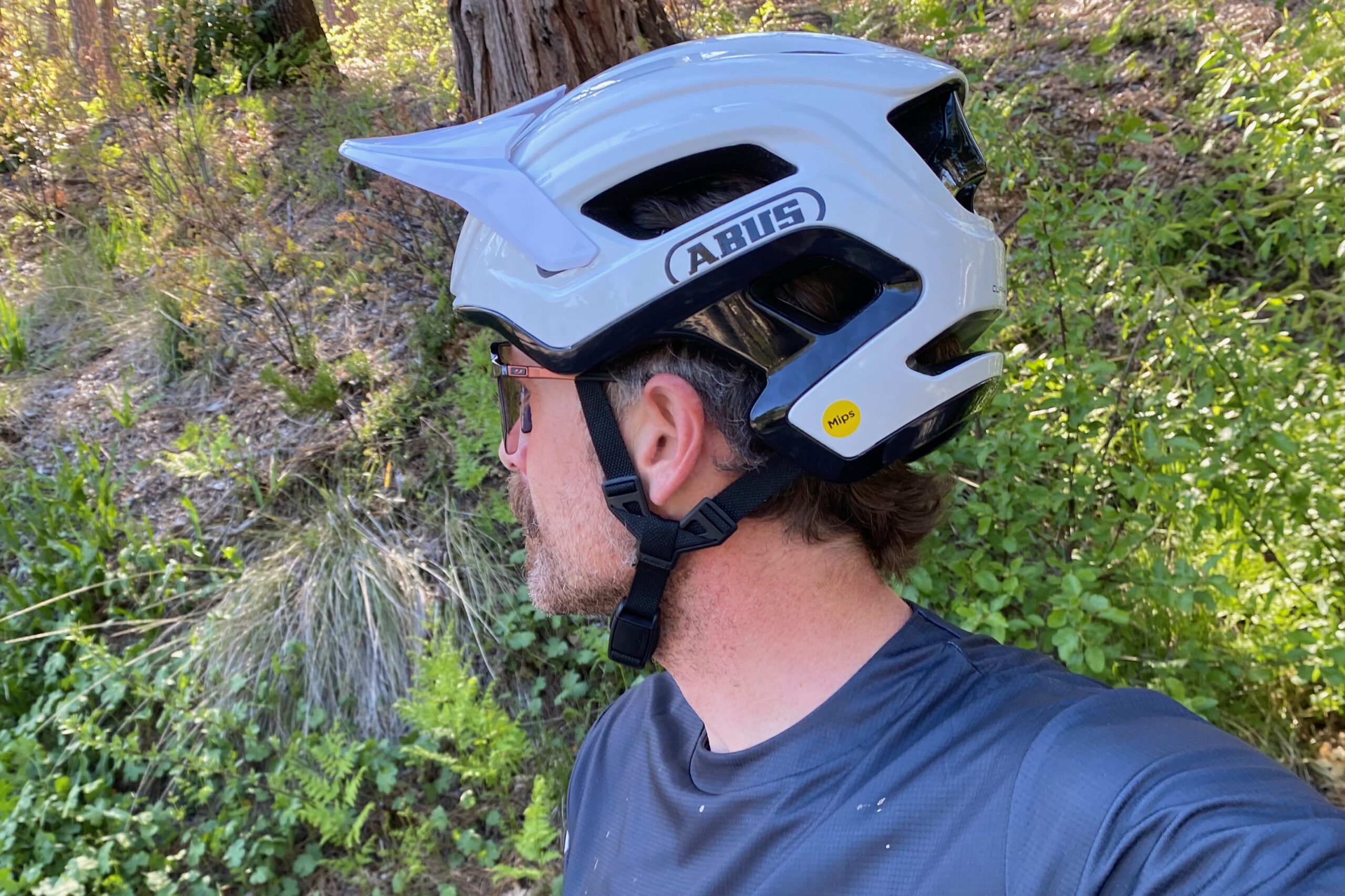
Coverage
As mountain bike helmets have evolved over time, the amount of head coverage has increased. For half-shell models like those reviewed here, this is most noticeable on the sides and back of the head where the shells drop down further to better protect the sensitive temporal and occipital lobes. This is particularly apparent in trail, all-mountain, and enduro-oriented models that are often referred to as “extended coverage” half-shell helmets. Unlike old-school helmets that sat high atop the head, modern helmets now surround much more of the skull. In general, we typically equate more head coverage with better head protection, and we feel this is a welcome advancement.

Ventilation
Depending on the climate where you live and ride and how much you sweat, ventilation may or may not be a high priority. For those that live in warm climates, ride at the heat of the day, or simply perspire a lot, how well a helmet allows air to pass through to cool the head may be of the utmost importance. Not only does good ventilation reduce the amount of sweat running down your face or dripping onto your lenses, but it helps to keep you from overheating. Fortunately, most helmet manufacturers do their best to make their helmets well-ventilated, though they are not created equal.
While important, the number of vents is not the only factor when it comes to ventilation. Instead, a well-executed design that involves adequate air intake vents at the front of the head, internal channels that move air over the head, and exhaust vents at the back of the head for air to escape is generally the most effective.

Visors
Visors, sometimes referred to as “peaks”, are a common feature on most mountain bike helmets and they serve several purposes. Many visors are adjustable, allowing the rider to position them at various angles. This makes it possible to drop them down low to help keep the sun out of the eyes at low sun angles or move them up and out of the field of view at high sun angles. They also serve to deflect trailside branches and can help keep light rain from reaching the eyes while riding. Adjustable visors and those positioned higher on the helmet typically also accommodate a pair of goggles or sunglasses stashed beneath them when not in use. Some visors are also designed to break away in the event of a crash to reduce the chance of injury.

Eyewear Compatibility
Many helmet manufacturers are designing and marketing their helmets with integrated sunglass storage and goggle compatibility. It has long been the case that you could wear goggles with many helmets and stash sunglasses in the front vents, but now, these features are often a part of the design. The spacing of the front vents is pretty critical for stowing sunglasses, and some manufacturers have taken to adding rubber grips or other materials to better hold sunglass arms. At the rear of the helmet, many now feature a rubber strip or pad of some kind to add grip for a goggle strap. As mentioned above, visor adjustability or placement is also a factor when stowing either sunglasses or goggles when not in use.

Additional Safety Features
The whole point of making helmets for cyclists is to help prevent injury, and manufacturers are seeking additional ways to protect the people who buy their products. They do this in a variety of ways, including the implementation of new technologies. Brands like Specialized and ABUS make small crash detection sensors, called ANGi and QUIN, respectively, that can be attached to the helmet. These small units can sense the forces associated with a crash and send a notification to your contacts in an emergency situation. POC includes a twICEme NFC medical id chip in certain helmets, which can be read by first responders to find out important personal, medical, and contact information if the individual is unresponsive or unable to communicate effectively.
As mentioned in the visors section above, some models have visors that are designed to break away in the event of a crash which may help reduce the chance of injury. Other brands use structural reinforcement in their designs with things like aramid bridges or ActiCage integrated into the EPS foam to add strength. The foam itself can be varied with some companies using dual-density foams like EPS and EPP which absorb the energy from high and low-speed impacts differently. Koroyd is another interesting material used by brands like Smith and Endura. This honeycomb-like structure is intended to crush and crumple on impact while remaining porous and allowing air to pass through and heat and moisture to escape.
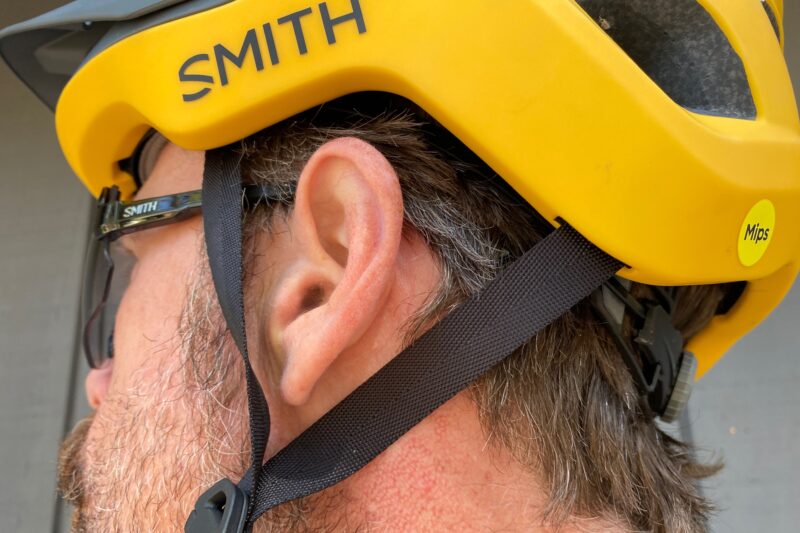
Durability
Unless you crash often or are careless with your gear, helmets tend to have a pretty good lifespan. Quality helmets have in-mold constructions with the inner foam well bonded to the outer shell, and most now have full shell coverage over the lower edge of the foam. Exposed foam is more susceptible to damage, so the more it is covered, the better. The durability of the outer shells of helmets can vary, however, with some being quite resilient and others being more prone to denting if struck by a branch or dropped in a truck bed with too much force, for example. Remember, your helmet may prevent serious injury or even save your life, so treat it with care.
If you don’t ride that often, most helmets will last for several years without issue. If you ride every day, you’ll probably want to replace your helmet more frequently, every couple of seasons or so. Always remember, if you crash and impact the helmet, it should be replaced.
Value
Mountain bike helmets vary wildly in terms of price with the models we tested ranging between $75 and $300. Sure, many of the more expensive models feature the latest and greatest technology, lighter weights, and flashier designs. The reality is, any of these helmets will protect you better than none at all, and even the least expensive model we tested, the Specialized Camber, beats many of the costlier models in Virginia Tech’s impact testing and looks pretty darn good doing it. So, you don’t have to spend a lot for quality head protection, but it’s your head and brain we’re talking about here, so you make the call.
Frequently Asked Questions About Mountain Bike Helmets
It all depends on the type of riding you’re doing and how much protection you think you need. If you’re an XC rider who isn’t getting too gnarly and wants a lightweight and well-ventilated helmet, go for an XC model. If you’re a trail, all-mountain, or enduro rider who wants some more coverage for rowdier riding, an extended coverage half-shell is probably the best bet. If you’re getting into really aggressive terrain, massive jumps, and high speeds, or are simply worried about crashing on your face, then a full-face helmet may be the right choice. Want the option to choose? Convertible helmets can work as both a full-face and half-shell.
It’s hard to put a price on the protection of your head and brain. While you don’t need to shell out for the most expensive helmet on the market to protect your head, many people will choose to do so regardless. Most quality bike helmets range between $100-$300, with a select few coming in below the $100 mark that we would actually recommend. So, even if you’re on a tight budget, a helmet like the Specialized Camber is a great option.
There is a bit of speculation as to whether or not rotational impact protection systems actually do anything. If you look at MIPS’s own research along with the fact that the 50 top-ranked bike helmets in the Virginia Tech impact test ratings have MIPS or something similar, we feel that it’s safe to say that yes, there is something to it. It’s our brains we’re talking about here, and even the slightest increase in protection is something that we’re on board with.
Yes! Helmets protect your head by absorbing forces that typically cause the shell and foam to deform, crack, and compress. This often causes the helmet’s integrity and protective qualities to be compromised. A helmet should always be replaced after it has been impacted in a crash.
After a strong push towards gender-specific cycling gear several years ago, many brands have returned to unisex models. This is particularly true in the helmet market, where color is often the primary difference between men’s and women’s models. While some brands do make women’s models that may accommodate long hair and ponytails better, there is little else to require gender specificity in mountain bike helmets.



